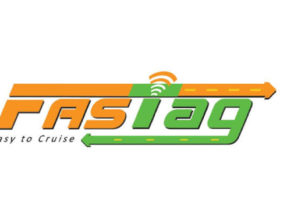FASTag toll collection grows 46% to ₹50,855 crore in 2022
25, Jan 2023

Prelims level : Schemes
Mains level : GS-II Government policies and interventions for development in various sectors and issues arising out of their design and implementation.
Why in News?
- The Ministry of Road Transport & Highways has recently said in a statement that total toll collection through FASTag on fee plazas, including State highway toll plazas, increased 46% to ₹50,855 crore in 2022 from ₹34,778 crore in 2021.
About the News:
- “Electronic Toll Collection (ETC) through FASTag has witnessed constant growth over last few years. Total toll collection via FASTag on fee plazas, including State Highway fee plazas during calendar year 2022 was Rs. 50,855 crore, which is an increase of approx. 46% as compared to Rs. 34,778 crore in 2021,” the ministry said.
- Similarly, the number of FASTag transactions also witnessed a growth of about 48% in 2022 as compared to that in 2021. The number of FASTag transactions in 2021 and 2022 was ₹219 crore and ₹324 crore respectively.
- The statement said with 6.4 crore FASTags issued as of date, the total number of FASTag-enabled fee plazas across the country also grew to 1,181 (including 323 state highway fee plazas) in 2022 from 922 in the previous year 2021.
- Notably, MoUs have been signed with 29 different State entities/authorities for on-boarding State fee plazas under FASTag program which include states like Uttar Pradesh, Maharashtra, Gujarat, Madhya Pradesh, Telangana and Karnataka, etc.
- FASTag implementation has reduced the waiting time at NH Fee Plazas significantly.
What is ‘FASTag’?
- FASTags are stickers that are affixed to the windscreen of vehicles and use Radio Frequency Identification (RFID) technology to enable digital, contactless payment of tolls without having to stop at toll gates.
- The tags are linked to bank accounts and other payment methods.
- As a car crosses a toll plaza, the amount is automatically deducted, and a notification is sent to the registered mobile phone number.
- The tag is valid for five years and comes in seven different colours — violet, orange, yellow, green, pink, blue, black. Each colour is assigned to a particular category of vehicles.
- To encourage the use of FASTags, the National Highway Authority of India (NHAI) refunds 5% of the total monthly transactions.
- Indian Highways Management Company Limited (IHMCL) (a company incorporated by National Highways Authority of India) and National Payment Corporation of India (NPCI) are implementing this program.
- FASTag is presently operational at both, national and state highways.
How does it work?
- The device employs Radio Frequency Identification (RFID) technology for payments directly from the prepaid or savings account linked to it.
- It is affixed on the windscreen, so the vehicle can drive through plazas without stopping.
- RFID technology is similar to that used in transport access-control systems, like Metro smart card.
- Radio-Frequency Identification (RFID) is the use of radio waves to read and capture information stored on a tag attached to an object.
- A tag can be read from up to several feet away and does not need to be within direct line-of-sight of the reader to be tracked.
- If the tag is linked to a prepaid account like a wallet or a debit/credit card, then owners need to recharge/top up the tag.
- If it is linked to a savings account, then money will get deducted automatically after the balance goes below a pre-defined threshold.Once a vehicle crosses the toll, the owner will get an SMS alert on the deduction. In that, it is like a prepaid e-wallet.
Why do we need this scheme?
- The Ministry has clarified that this has been done to further promote fee payment through digital mode, reduce waiting time and fuel consumption, and provide for a seamless passage through the fee plazas.
- Cameras at toll booths will take photos of passengers in a vehicle, which will be useful for the Ministry of Home Affairs as there will be a record of a vehicle’s movement.
Other Key Facts:
- The world’s first electronic toll plaza began operations in Norway in 1986.
- Japan was the first Asian Country to begin it in 2001 and China started in 2014.







